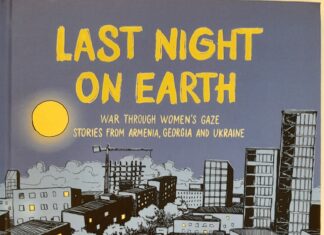MILAN, Italy — In the scholarly world, serious major projects can take years to complete. It took more than 20 years to publish two series of volumes of the Italian archival series Documenti Diplomatici Italiani sull’Armenia [Italian Diplomatic Documents on Armenia], and this does not include prior planning and preparation time. This series of documents will save historians, political scientists and other scholars both time and money for decades to come by making primary sources on modern Armenian history easily accessible. It is a project that should be better known to Armenians around the world.
The project is comprised of a first series of three volumes, covering the years 1879-1890; the second series of six volumes, covering 1891-1911; and the third series of four volumes, covering 1912-1923. The second and third series, directed by Marta Petricioli of the University of Florence, will be complete soon, when volume ten is published. The first series requires more time and financial resources because most documents are handwritten and take more time for transcription. All the documents published are from the Italian Foreign Ministry archives and are reproduced in their entirety. The only changes made concern spelling and style.
Each volume is edited by a young scholar, and contains an introduction about the events of the period it covers, an index of names and an index of places. The majority of documents are in Italian, but some are in English, French or Latin.
The project was and is supported financially by a group of Italian Armenians through the Union of Armenians of Italy, but independently run by academics. One of the Armenians involved is Agop Manoukian. Manoukian, born in Como, Italy, is a sociologist who taught in various Italian universities and served as president of an industrial chemical group in Italy until 2010. He was president of the Union of Armenians of Italy for some years, and at present is its honorary president. Manoukian supported various publications, like the Armenian Architecture Documents series (1968-1990), and the Center for Studies and Documentation of Armenian Culture (in Venice since 1991). He is the author, among other works, of a book on the Armenian presence in Italy titled Presenza armena in Italia. 1915-2000 (Milan: Guerini e Associati, 2014).
Two of the other Armenians involved in supporting the archival series through the Union of Armenians of Italy are Minas Lourian, current president of the Union of Armenians of Italy and director of the Venice-based OEMME Edizioni/ Centro Studi e Documentazione della Cultura Armena, and Pietro Kiuciukian, Honorary Consul of Republic of Armenia in Milan and Lombardia Region.
Manoukian said, “It was an Armenian of Rome, Dikran Sirinian [1923-2003; Prof. in Space Engineering] who noticed that in the archives of the Italian Ministry of Foreign Affairs there was an already well organized dossier called Armenia. He saw that there were at least one thousand documents. After reflecting on this, he contacted a number of young historians, including Ara Sarafian and a German named Hilmar Kaiser. They knew of this archive and agreed to help create a committee in 1996. The head of the committee was Professor Ennio di Nolfo of the University of Florence.”










